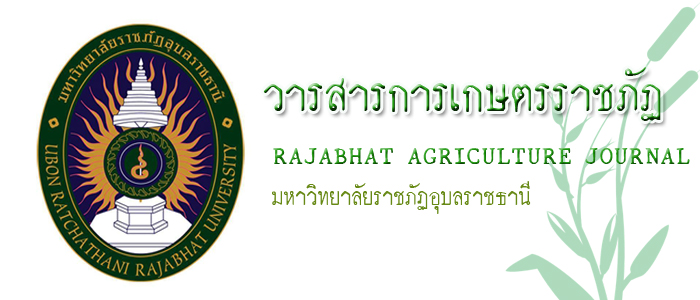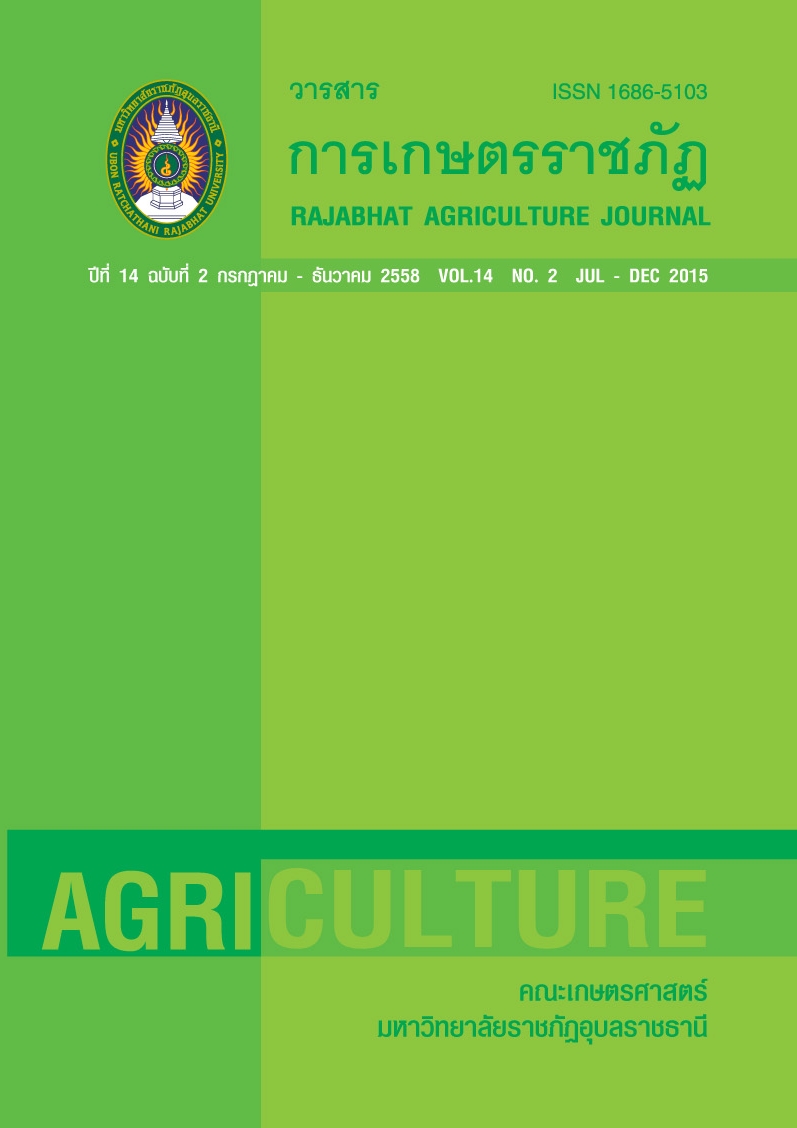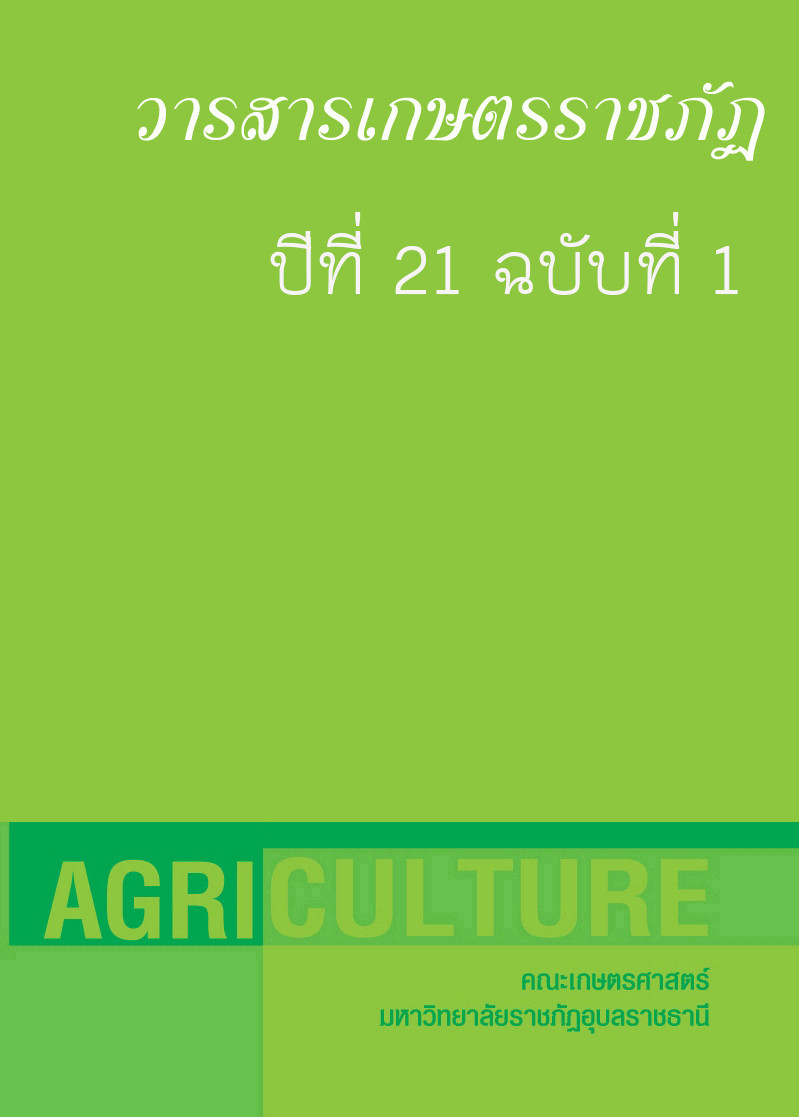บทคัดย่อ
-
Abstract
The province of Cagayan, Philippines comprise of 30,653 hectares of rain fed land. The province’s yield of 3.84 MT /ha. for rain fed low land is low compared to 4.2 MT/ha. for the region. Hence, the need to determine the factors influencing rice productivity in rain fed areas of Cagayan.These factors include farmers profile, cultural management, environmental and technological factors, marketing practices and support services. Respondents come from municipalities with highest, middle, and lowest average yield. Descriptive-correlational design was used. Farmers have farming experience of 25 years and reached primary education only. Farm operation is shouldered by farmers/land owners and additional expenses financed from traders/banks with 6% interest payable in 5 months. Environmental factors included flat lowland farms with loam/clay loam soil; and farm-to- market roads classified as cemented/ rough, climatic factors and insufficient water supply. Few farmers use hybrid seeds and follow straight line planting. Most farmers use inorganic fertilizers, foliar fertilizer and chemical based herbicides, insecticides, molluscides, fungicide and rodenticide. Farm activities from land preparation to harvesting are mostly manual. Farm mechanization is high during land preparation and use of thresher is higher than manual. Majority of farmers in the three categories sell their produce to traders. Support services are delivered by Department of Agriculture focus on seed selection, land preparation, soil nutrient management, pest and disease control, provision of farm inputs and farm planning and budgeting. Factors correlated with yield were harvesting practices, post harvesting practices, form of product sold, marketing practices, land preparation, pest and disease management, harvest time and nutrient management. Stochastic Frontier Analysis revealed that 16 and 23 farmers in the high and low yield municipalities, respectively, have yield higher than the predicted SFA during wet cropping season. Farmers in the middle yielded lower than the predicted SFA yield.


